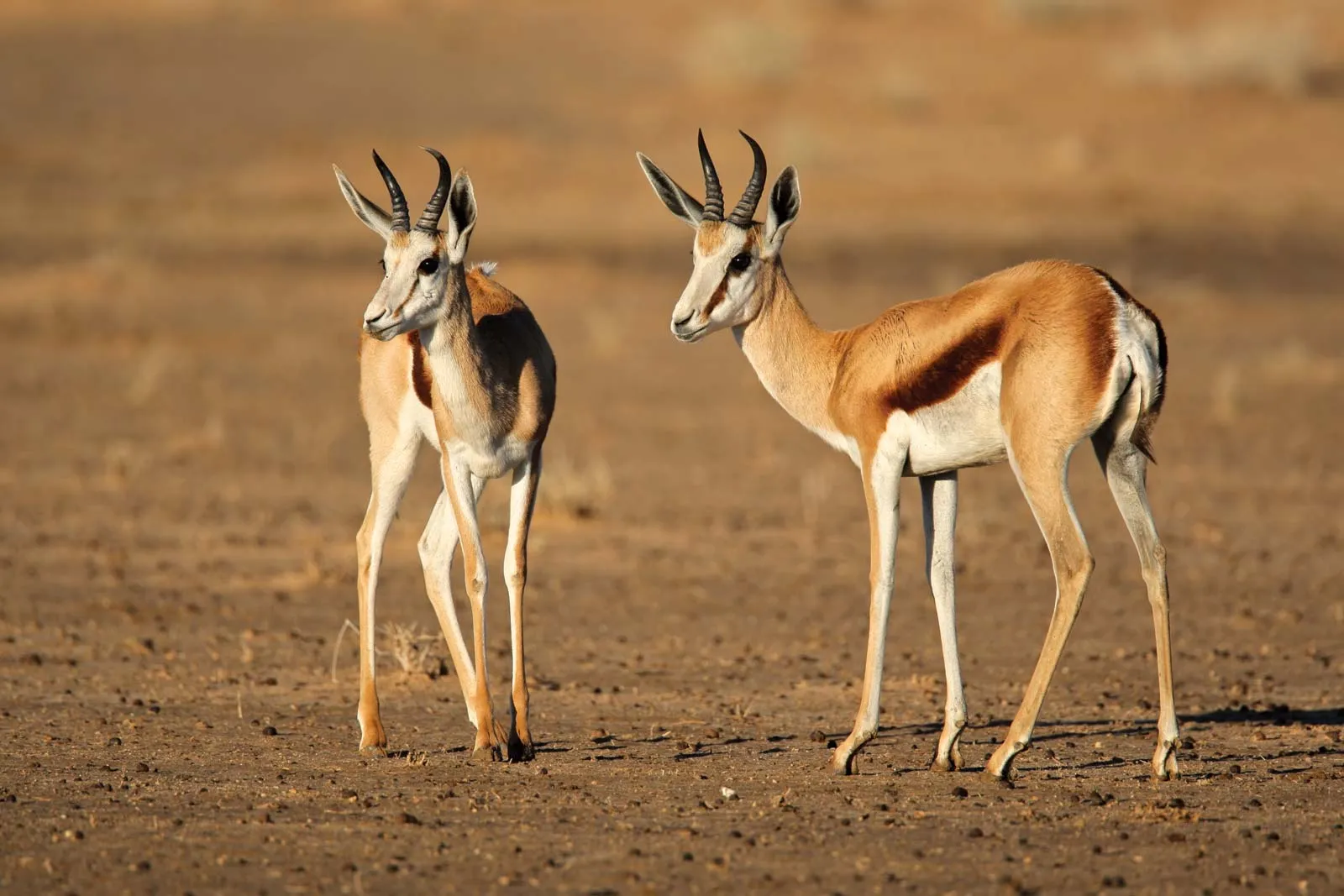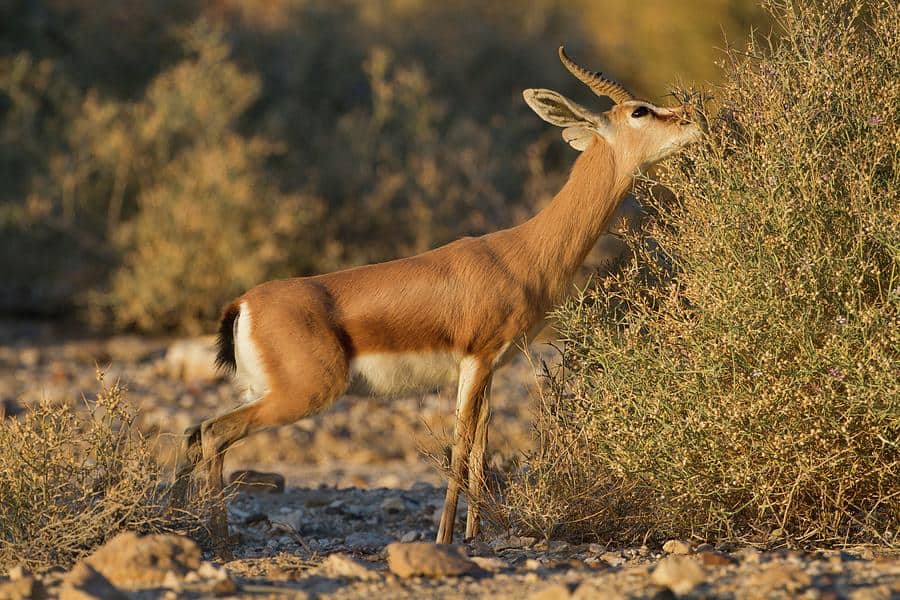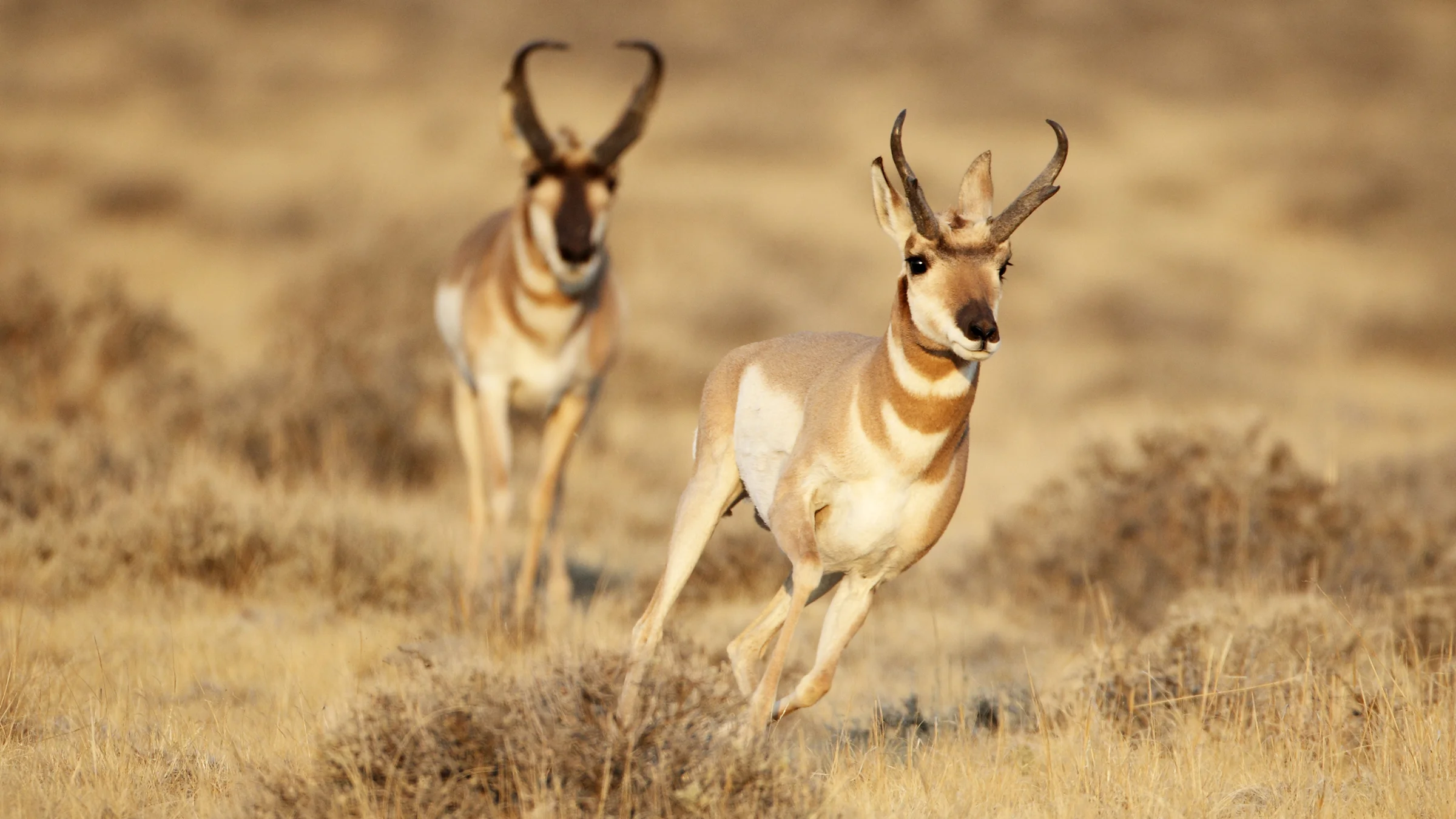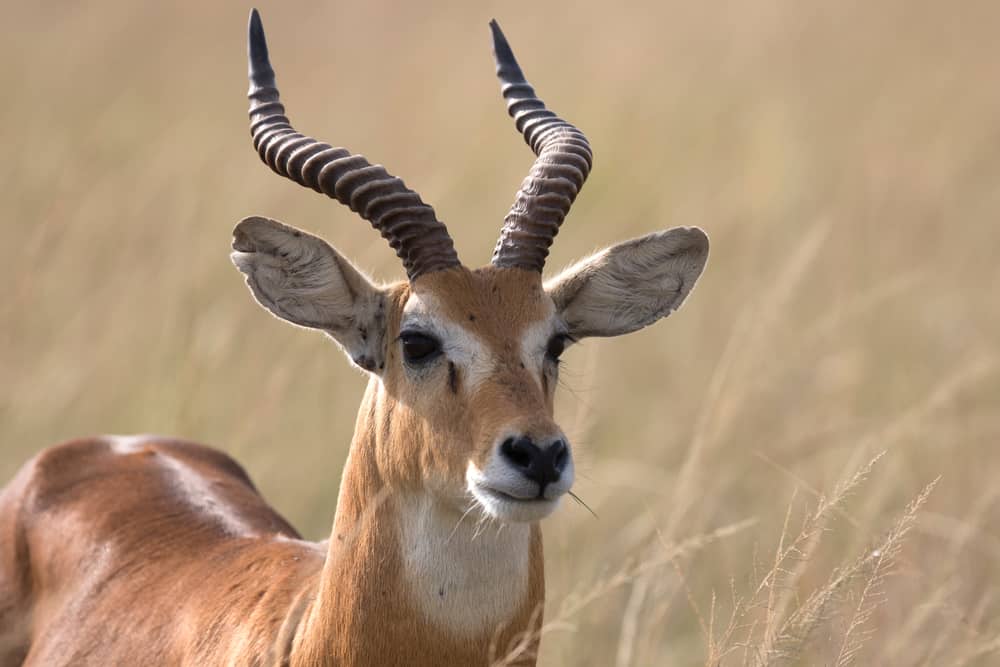Antelopes are some of the fastest creatures in the animal kingdom. They use their speed to elude some of the wildest predators and rely on their agile skills to get immersed in the forest. Yet, despite their incredible escape skills, they are still in danger of extinction.
Today, we’d like to give you a deep dive into antelopes’ facts. These wild animals play a huge role in their environment and human society. Let’s learn more about their behavior, eating habits, and more in the guide below.
Antelopes Facts

An antelope is a four-legged animal from the family Bovidae. They have large and prominent horns that can have different shapes, including straight, curved, pointed, or spiraled. Unlike what some people think, antelopes are not deers. They are more related to the Bovidae family than the Cervidae family,s where deers belong. On the other hand, deers’ antlers grow non-stop, whereas antelopes’ horns stay the same size forever.
Antlers are made out of bone structure, while horns are made with keratin, which is the same component we have in our nails and hair. Antelope horns are used for social and territorial dominance. They are also used during interactions with predators.
Distribution & Habitats
There are many species of antelopes, and each one has adapted to its environment. They can live in multiple conditions, including Savanah, desert, woodlands, mountains, wetlands, plain areas, and grasslands. Some antelopes in rocky regions will have more prominent horns used for climbing, whereas those in flat environments will have flat horns.
Most antelopes live in Africa, and 14 species live in Asia. Yet, there are no native antelopes in Australia, Antarctica, North or South America. You may spot some of them in North America, but they may have been imported for hunting.
Antelopes’ Reproduction Cycle
Each antelope species have its own reproduction practices. Some of them are even considered monogamous. It is also a common practice for males to fight with each other for a female to breed. Once they mate and the antelope female has been impregnated, it’ll take from four to nine months for gestation.
They normally birth one cub each breeding season. However, it is rare but not impossible for them to get twins. Due to the highly vulnerable condition of the baby antelope, their mothers will have to hide them for a while so they can hunt and reunite with the herd. They can also join the pack immediately, and the tribe will offer protection for the cub.
Where Does The Name Antelope Come From?
This name comes from antelop in French, which also comes from ant(h)alopus in Latin. There’s also a more ancient origin that derivated from the Greek word ἀνθος, spelled anthos, which means flower and ώψ (ops) meaning eye. Researchers believe people used this name for these animals because of their beautiful elongated eyes with long eyelashes.
Types Of Antelopes
Antelopes are a very varied species with 91 sub-species worldwide. One of them, the Impala, is the fastest mammal in the world, only after the cheetahs. Most antelopes are dispersed in multiple genera, tribes, and sub-families. Here, we have compiled some of the most common antelope groups below:
- Antilopinae: This group has the largest number of antelope species.
- Reduncinae: This group contains species like dibatags, springboks, and blackbucks. They usually live in wetlands and plain habitats.
- Hippotraginae: this group is characterized by thick-necked antelopes. They are also considered horse goats because of their large bodies. This includes species like Hippotragus equinus, Hippotragus leucophaeus, which is extinct, and Hippotragus niger.
- Cephalophinae: These are small to medium-sized antelopes that originated in southern Africa.
- Alcelaphinae: They are also called four-eyed antelopes because they have a scent gland near their eyes that expands whenever they get excited, which makes them look like they have four eyes. Some of the Alcelaphinae species are wildebeest and bonteboks.
What Do Antelopes Eat?

The majority of antelopes are only herbivorous. They eat the vegetation that’s available in their environment, such as grass, bushes, leaves, shoots, herbs, small trees, and graze. However, the duiker is the exception to this rule. These antelopes occasionally eat insects and small mammals, but only in small quantities.
Most antelopes have adapted their diet to their most convenient strategies. Some, such as Thomson’s gazelles, will follow zebras that eat the toughest part of the grass, so they can eat the tender section. On the other hand, the addax antelope will follow the rain to ensure they only eat fresh vegetation. Finally, the Duiker might also follow birds and monkeys to pick up fruit they left behind.
What Do baby Antelopes Eat?
Baby antelopes will only drink milk from their mothers. This is the only way for them to get the nutrients they need to get strong and grow. Once they are more mature, they will become herbivores. It will depend on their species and what’s available for them in their habitat.
How Do Antelope Digest Their Food?
Antelopes are ruminants, which means they go through a particular digestive process that consists of four stages. Antelopes’ stomach is composed of the reticulum, rumen, abomasums, and omasum. Antelopes will grab their food with their tongue and then place them in their mouths for chewing it.
Then, they will send the food to the rumen. This is where the grass is partially digested and sent to the reticulum. Then it’s sent back to the mouth. The antelope will chew it again and swallow it to send it to the omasum to reduce the excess water. After that, they will send it to the last stage, which is called abomasums. Then, the food is sent to the small intestine for nutrient absorption.
What Are Antelopes’ Predators?
Despite their efficient escaping mechanisms, antelopes are vulnerable prey for large predators such as lions and wild dogs. They must hide from them and run fast to protect themselves and their herd. Below are some of the most common antelope predators:
- wild dogs
- pythons
- leopards
- civets
- cheetahs
- hyenas
- lions
Most of those we mention are mammals. However, some large birds can also hunt juvenile calves and kill them. That’s the reason why their mothers hide them so well to protect them from potential threats.
Antelopes’ Defense Mechanisms

Antelopes have developed strong defense mechanisms to protect themselves from predators. One of the most common mechanisms is fleeing. Antelopes are incredibly fast, so they can lose their predator meters away in seconds.
Yet, it all depends on the species. Some antelopes will also use their legs to kick their threat. Others will bounce on their legs to demonstrate danger and alert the herd that something is coming. They usually remain in herds for protection.
Are Antelopes In Danger of Extinction?
According to the IUCN Red List of Threatened Species, 15 percent of antelope species are in danger of extinction. Some of the reasons they are at such high risk are human intervention in their habitats, harvesting, and hunting for entertainment. Their food supply gets limited whenever their environment is disrupted, and they eventually die.
Some of the species with the highest level of threat are:
- The Dama Gazelle
- Aders’ Duiker
- The Saiga Antelope
- Hirola
- Addax
That is why it is crucial to help conservation organizations as much as possible to prevent the extinction of these antelope species. Antelopes play a huge role in the biodiversity and sustainability of other species. To maintain the balance in their ecosystem, we must ensure their habitat is safe and clean.
Conclusion
Antelopes are highly agile species with incredible running skills. They have an extensive list of subspecies that live in Africa and Asia. Even though they’re not regularly found on other continents, you can still see them due to importation.
Antelopes are not so peaky eaters, except for addax antelopes that prefer fresh grass. They will eat vegetation such as grass, herbs, leaves, and bushes. Some species have also adapted their eating habits to other animals such as monkeys, birds, or zebras to ensure an easier eating process. Most of them are vegetarians, except for duiker, which eats small amounts of flesh from other animals or insects.
